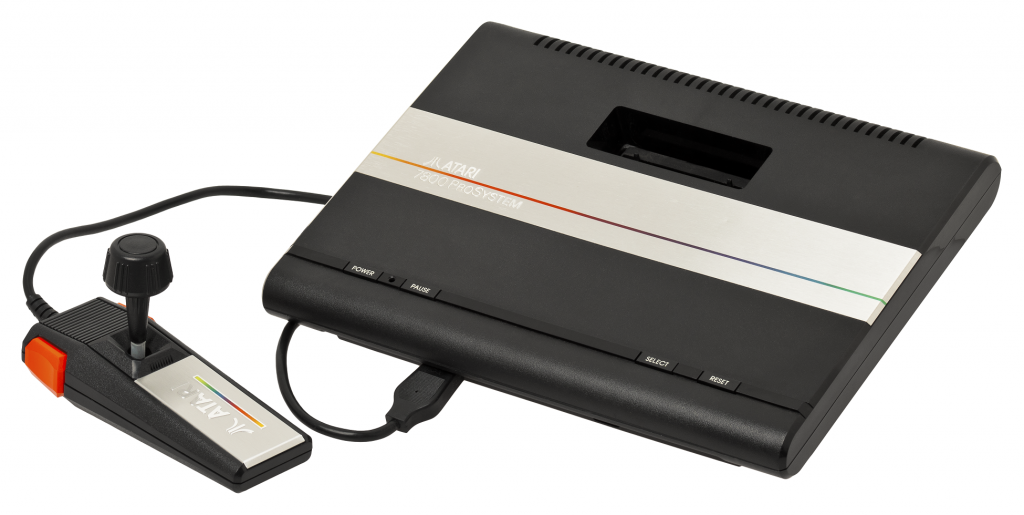With the success of the Atari 2600, and its successor the Atari 5200, the renowned games company was desperate to get the next generation of console out to an eager, home computer enthusiast, and games hungry market.
However, since the announcement in 1984 of the new Atari 7800, it took three years before the console itself was on the UK shelves, with it being made available the year before in the U.S. This gap was enough to cause Atari some immense headaches, as the Nintendo Entertainment System had already been realised, and was dominating the living rooms of the gaming market that Atari so desperately wanted to claim.
Our fondest memory of the Atari 7800 was that of the version of Galaga and the original 7800 game, Desert Falcon. In our humble opinion, the 7800 was one of the best ports of Galaga and managed to retain the feel, sprites and smoother motion of the arcade version that other systems simply didn’t offer.
Atari also had the revolutionary concept of making the Atari 7800 backward compatible with the 2600. Something that modern console makers could do well with improving throughout their current models.
Its history
The Atari 7800 was actually commissioned by an external company to Atari. General Computer Corporation, and had been designed throughout 1983 and 1984 ready for a rollout that same year.
The sale of Atari to Tramel Technology Ltd in 1984 though put a stopper in the launch of the 7800, which incidentally was going to be called the 3600 to begin with. A quick upgrade a couple of years later made the 7800 a better, technically speaking, machine and one that also allowed the aforementioned backward compatibility for the Atari 2600.
It was powered by a customised 6502 processor running at around 1.8MHz, with 4KB of RAM and a 4KB ROM. The cartridges were each around 48KB in size, although rumour has it that some stretched to around 64KB toward the end of the console’s life.
The faster processor, named Atari SALLY, was similar to that found in the Commodore 64 (the 6510 was the direct successor to the 6502), and the rival console of the time, the NES. This meant that faster graphics could be displayed, which brought a more arcade feel to the home.
The end of the 7800 though was quite swift. Within a few years the 7800 production had no choice but to be terminated as Nintendo was dominating the market with a huge 85% share, and had secured a large catalogue of gaming content from the likes of Taito. Although profits were generally good for Atari, the company never did manage to reclaim the home console crown that it enjoyed so much in its heyday.
The good
Classic Atari console design, backward compatibility with the 2600; Commando and Dig Dug!
The bad
Poorly limited number of 7800-specific games, better graphics on NES (sorry to say that, but there you go). Terrible controller.
Conclusion
The 7800 effectively ended Atari’s home console division. The XE did follow, but that didn’t fare too well either and died a relatively quick death as well.
Such is the way of things, but we do have to thank Atari for bringing us the 7800, without it we wouldn’t have had Galaga championships at home.


